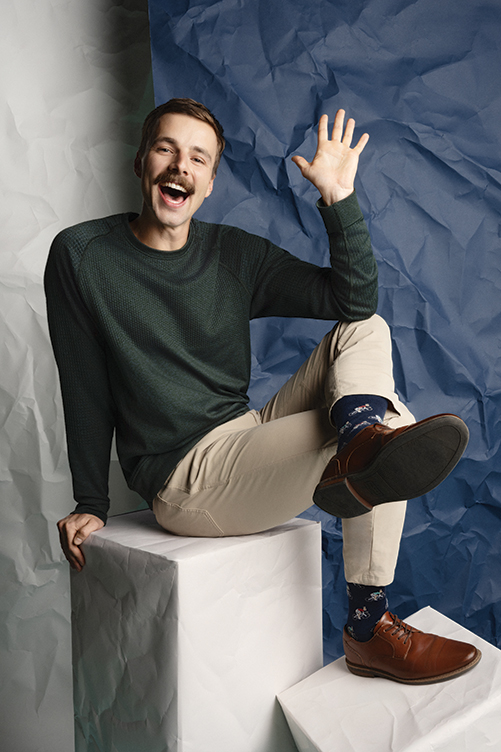Student-at-Law, Brownlee LLP; Member, Paths for People
Age 28
Stephen Raitz is a runner, but he’s not one of those runners that makes running his, her or their entire life — and tries to make it your life, too. He just wants us all to live in a nice, walkable city.
“I’m a cheap bastard,” Raitz jokes, “and so from a poor young person’s perspective, it’s like, why would I buy a car if I can’t afford it? But the experience itself is so much more fun. It’s easier to be closer to your neighbours, or just say hi to people, because you’re not trapped in a metal block.”
Raitz grew up in Leduc, which meant driving to Edmonton, or high school, as soon as he got his licence, because “back then, I wasn’t even thinking about biking, even though, a lot of times, biking would have been faster.”
But Raitz has thought about biking, walking and running a lot in the decade since he graduated. The theatre improviser-turned-student-at-law has for the past six years been on the board of Paths for People, which attempts to make Edmonton a multi-modal city through community-oriented advocacy campaigns.
In a city very much designed for cars, walk, run and roll advocates face an uphill battle. But even when things don’t pan out — like when the group petitioned to fully pedestrianize 102nd Avenue along the LRT’s downtown Valley Line, only for a single traffic lane to be laid down instead — the ever-chipper Raitz still sees a partial victory.
“We really pushed for that idea because it came from a member in the community. It almost happened — and then it didn’t happen. I think at times, the two sides were talking past each other, but difficult, messy conversations are important too. Because even if, in this case, ‘car culture won,’ people understood each other’s perspectives a bit more.”
With the City of Edmonton announcing this spring a $100 million-dollar funding of upcoming Active Transportation Network Expansion projects to be constructed in 2025 and 2026, it would seem the conversations are becoming clearer, and perspectives are changing.
“When you look at all the delays, damage and even death we accept with driving cars, compared to public transit, it’s clear the data’s on our side. But I think the fun is on our side too, because the actual process of moving through our city becomes much more enjoyable.”
